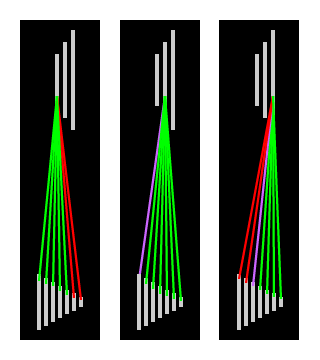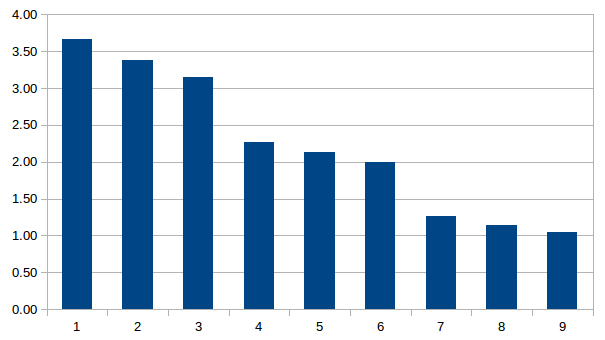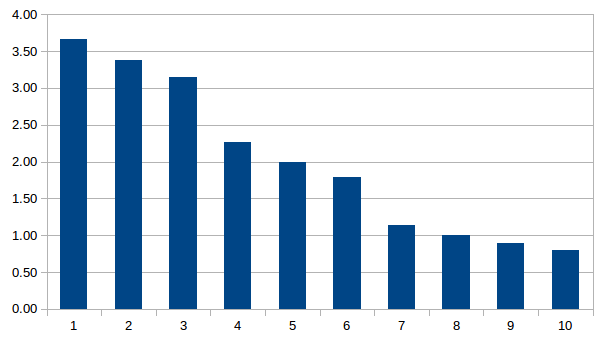Yes, you could do this and done as you describe I think you'd end up with as many ratios as rear cogs.
Someone once made a single-shifter derailleur system that moved both derailleurs from one shifter (using two cables) and "IXOV" has apparently started doing that again with the "Synchrobox" but all I can find are press releases, not even a company website. They typically use fewer than the maximum number of gears because of the overlaps, but from memory they do give more than just one gear per rear cog.
If you were building a bike this way you might be able to get away with minor back-jumps (a cassette that went 12,13,14,15,13,18,21, say). You might even be able do use a normal shifter with it by using a lever attached to the cable to shift the front derailleur some fraction of the movement of the rear one, but I suspect that would not work very well. If you used a cam instead you could get the larger movements for chainring shifts where you wanted them, but it would be a more complex design.
Using that diagram above to help me think, if you had a 9 speed close ratio road cassette you'd have three gears per chainring:
chainring / cog = ratio
9 speed 12-23 10 speed 12-30
44 / 12 = 3.67 44 / 12 = 3.67
44 / 13 = 3.38 44 / 13 = 3.38
44 / 14 = 3.14 44 / 14 = 3.14
34 / 15 = 2.27 34 / 15 = 2.27
34 / 16 = 2.13 34 / 17 = 2.00
34 / 17 = 2.00 34 / 19 = 1.79
24 / 19 = 1.26 24 / 21 = 1.14
24 / 21 = 1.14 24 / 24 = 1.00
24 / 23 = 1.04 24 / 27 = 0.89
24 / 30 = 0.80
That doesn't work too badly, graphed it looks like this:
With a 10 speed 12-30 cassette that also works:
Someone once made a single-shifter derailleur system that moved both derailleurs from one shifter (using two cables) and "IXOV" has apparently started doing that again with the "Synchrobox" but all I can find are press releases, not even a company website.



